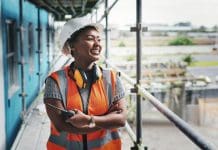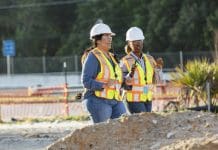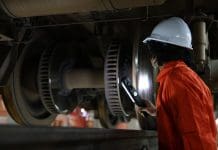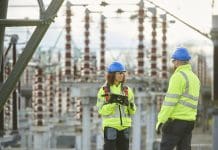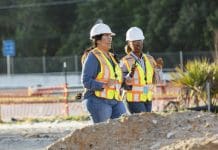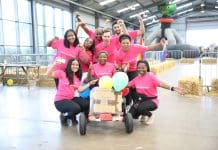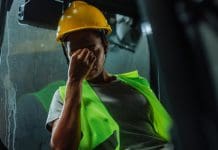Issues around everyday sexism remain prevalent in engineering, and with the proportion of women working within the industry decreasing in the past year, it’s clear that while progress has been made, there is still has a long way to go
Being mistaken for other none-technical job roles, catcalling on worksites or being told “you don’t look like an engineer” are sadly a few examples of the assumed stereotypes and misogyny being faced by female engineers.
Engineering UK workforce data shows the proportion of women working in engineering and technology roles has decreased in the past year from 16.5% to 15.7%. In stark contrast, women make up more than half of the rest of the UK workforce (56.1%).
Common misconceptions of female engineers

Project structural engineer Kathryn Sykes, 28, feels there is a common misconception that women are seen as “too sensitive” to work in the construction industry, which has a long history of being famously “rough around the edges”, in particular construction sites.
She has regularly encountered scepticism about her role as a structural engineer and faced questions about her expertise, with assumptions often made that she may need assistance from senior engineers.
Figures show that while entry into the industry has become better, retention remains an issue, showing that the drop in women leaving the industry is concentrated among women aged 35 to 44.
Problems around lack of progression opportunities and the industry as a whole being slower to adapt and create flexible options that accommodate family responsibilities effectively are thought to be contributing factors behind this.
Kathryn said: “Many women have proven their resilience, adaptability and competence in this environment, excelling in various roles and bringing valuable perspectives to the industry. Their presence not only challenges outdated stereotypes but also enriches the work culture and contributes to a more inclusive and effective workforce.
“Another prevalent misconception is that a woman’s place is in the home and that ‘you can’t be an engineer and raise a family’. This belief is not limited to the engineering sector but is widespread across various industries. It is a vastly inaccurate understanding that devalues the many incredible, strong women who successfully balance work and family life.
“While flexible working arrangements have improved throughout the engineering industry and ongoing discussions about equal partnerships within family units are helping to challenge this misconception, we still have a long way to go as a society to foster truly equal attitudes on this issue.”

Hayley McArthur has been with multidisciplinary engineering consultancy Harley Haddow for over a year working as an electrical engineer, and within the industry itself for almost six.
“Within engineering, it can often be hard to see examples of women above a senior level (management level), so if there is no room for a woman to progress to this then I believe this has a lot to do with retention rates within certain age groups, as you want to know that you can progress and move up in your career,” she said.
“I think women should be treated the same as everyone else in the workplace and not be held back from any projects because they are a woman.”
Hayley has also experienced certain assumptions, purely because of her gender.
The 23-year-old added: “Working in the industry, you do encounter old fashioned people or the stereotypes who can’t quite grasp that women can be engineers. It’s not always ignorance; sometimes people are just taken aback and don’t expect it. There is often the misconception that women are limited compared with things a male could do.”
A lot of work still to do
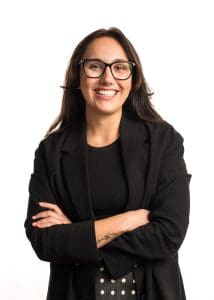
Misogyny within the industry was a factor that almost led to graduate civil engineer Rachel Fitzpatrick leaving the industry two years ago, but thankfully she found a fresh start and happier fit in her role at Harley Haddow.
While she acknowledges that there has been improvement since she began her career, she feels the industry still has a lot of work to do before it is a welcoming and comfortable environment for female engineers.
She said there is still a stigma around women in engineering, and an expectation that they should look or talk a certain way.
The 23-year-old added: “I have been told countless times that I ‘don’t look like an engineer’. During a lecture at university, I was told by a mature student that women don’t have a work ethic and are not willing to work overtime – a fact I wish someone had told me!
“I understand that the industry is really trying to push for equality but this can also unfortunately result in some small-minded people claiming that jobs are going to people just to fit this new ‘inclusivity and diversity’ mantra.
“For a woman to make it through the education system and into a role in engineering, the reality is she has already had to fight an uphill battle along the way, and the fact that we are still there and wanting to work in the industry is testament to our drive and resolve.
“This in itself is a huge skill and asset, and it is this that is forgotten by those that say women are being gifted jobs without earning it. Yes, we are women in engineering but at the end of the day, we are all engineers and should be treated the same as any male engineer.”
Different perspectives shape a better built environment for all
Kathryn, Hayley and Rachel all share an incredible passion for what they do, despite the challenges they’ve faced, with engineering offering them the chance to shape the world around them with a view from a women’s perspective.
The fact remains that the world is mainly designed and built by men, for men, exemplified by the number of toilets in event spaces. They are generally allocated on equal space for each gender; however, men take less time than women and you can get more urinals in. This results in very long queues for women at almost all event spaces as the calculations for allocation just don’t work.
Having more women in the decision-making process will help highlight these issues and lead to solutions and a more equitable society.
Kathyrn said: “Engineering solutions such as buildings, structures, products and devices benefit all of humanity, not just men. Therefore, it seems logical to me that a diverse range of people should be involved in their development.
“From the perspective of the construction industry, I believe that design and engineering teams should be diverse to ensure that our buildings cater to a broader spectrum of human needs.
“Engineering is a field where creativity meets problem-solving, and every challenge you tackle can lead to breakthroughs that improve lives. Don’t let stereotypes or misconceptions deter you! The industry is evolving, and there is a growing recognition of the need for diversity.”



